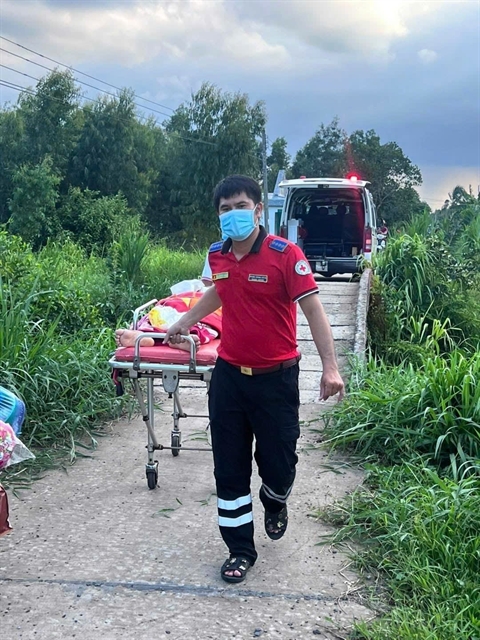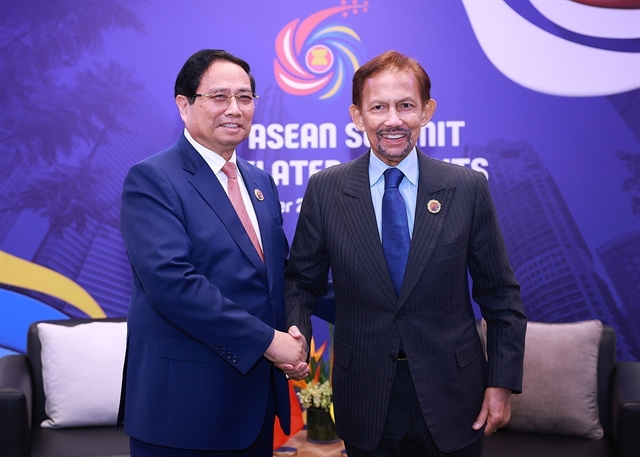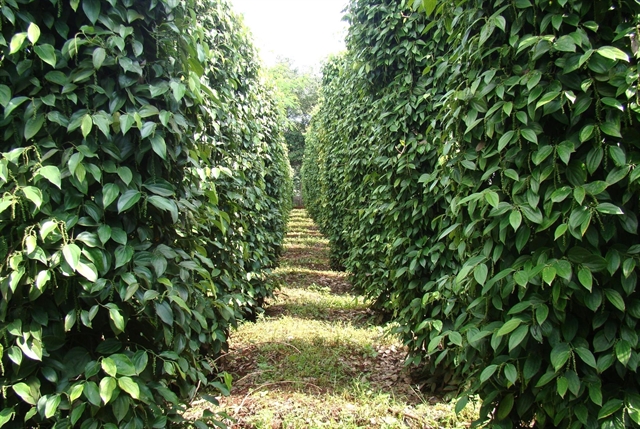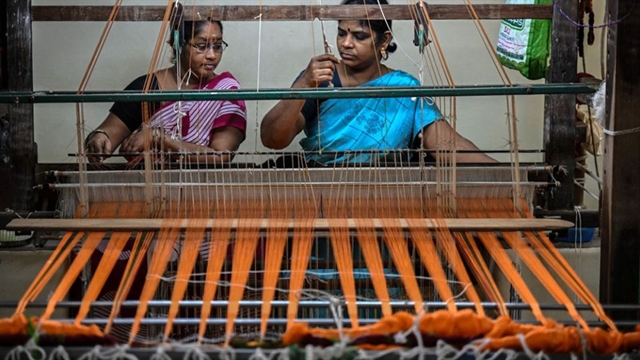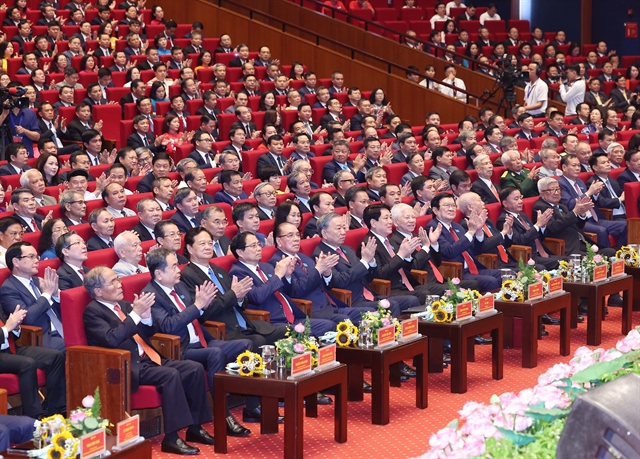 Politics & Law
Politics & Law
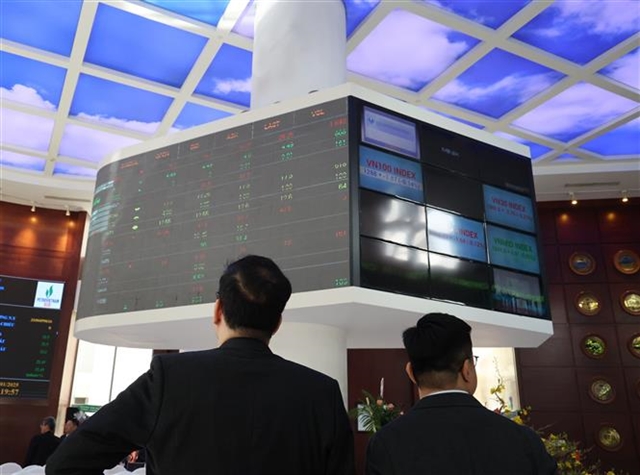
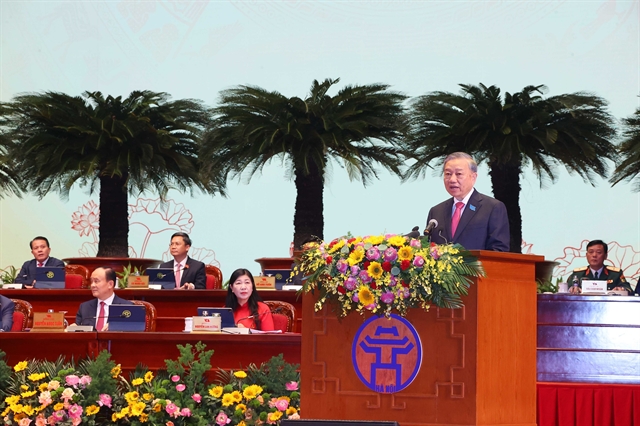 |
| Party General Secretary Tô Lâm speaks at the 18th Hà Nội Party Congress for the 2025–2030 tenure on Thursday. VNA/VNS Photo |
HÀ NỘI — Party General Secretary Tô Lâm has emphasised that “time-honoured culture, identity and creativity” must be placed at the heart of all development strategies for Hà Nội, serving as internal resources and as the backbone of the capital city’s resilience and intellect, thereby laying the foundation for its leadership role in the new era.
He made the statement at the opening ceremony of the 18th Hà Nội Party Congress for the 2025–2030 tenure on Thursday, which gathered 550 delegates representing nearly half a million Party members from 136 Party organisations under the Hà Nội Party Committee.
The Party chief described the congress as “a particularly significant political event” for both the capital and the country. This is a moment for self-reflection, setting new goals and generating fresh momentum for the capital’s growth in a new phase of development.
Acknowledging that both the country and Hà Nội are entering a new era filled with opportunities and challenges, he urged the city’s Party Organisation, authorities and people to fully recognise the capital’s unique role as the nation’s political and cultural centre and its responsibility to meet the expectations of Hanoians and all Vietnamese citizens.
To steer Hà Nội forward, he called for a holistic and systemic vision in which ideology, institutions, space, economy and people form an integrated and sustainable development entity. The first and most decisive breakthrough, he stressed, is to build a pure, strong and exemplary Party Organisation and political system that acts responsibly towards the people.
He instructed the Hà Nội Party Committee to resolutely combat corruption, wastefulness and misconduct; uphold self-criticism, unity and discipline; strengthen the bond between the Party and the people; and enhance the effectiveness of the two-tier government by shifting from a management mindset to one that is creative and service-oriented, with clearly defined decentralisation, accountability and oversight.
The Party leader envisioned Hà Nội as a city of deep-rooted culture, distinct identity and boundless creativity, aspiring to become a “civilised, modern and sustainable capital” with contemporary wisdom and global standing.
He said culture is the root and essence of national wisdom, nurturing trust and resilience; identity is a competitive edge that ensures the city retains its historic soul while driving talent and knowledge-based growth; and creativity is the engine of development, transforming heritage into dynamic value while preserving and enriching Hà Nội’s material and intellectual legacy.
The Party chief emphasised that development strategies must ensure synergy between culture, space, economy and people. Every decision, project and investment, he said, must sustain traditional values, foster cultural spaces for future generations and encourage innovation.
He proposed forming creative “nodes” across the capital – dynamic intersections of heritage, knowledge and technology – ensuring a continuous flow of creative energy into cultural and innovative hubs.
This vision envisages the establishment of three 'creative poles' that will drive Hà Nội’s development. The heritage pole will centre on the historic inner city and the Red River waterfront, preserving and revitalising the capital’s cultural and historical core. The knowledge pole will encompass the Việt Nam National University and other major research and education centres, fostering intellectual growth and innovation. The technology pole will focus on the Hòa Lạc High-Tech Park and surrounding innovation zones, promoting technological advancement and modern industry.
Together, these three poles will form the creative engine of Hà Nội, harmoniously blending history, knowledge and technology to shape the capital into a forward-looking, dynamic metropolis.
However, General Secretary Lâm identified four long-standing challenges, including traffic congestion, urban disorder, pollution (air, water and waste), and flooding.
To tackle these, he urged the city to move from management to creation, from fragmentation to integration, and from short-term fixes to sustainable solutions.
In this process, Hà Nội must transform from a 'single-pole' model into a 'multi-pole, multi-centre' urban structure, redistributing its functions beyond the overloaded inner city into decentralised yet well-connected centres, each with a specific role within a unified whole.
He further proposed positioning Hà Nội as a national hub for scientific research, technology and innovation – a centre for policy development, new technologies, talent cultivation and a launchpad for national ideas – working in tandem with HCM City as the country’s twin engines of innovation.
The Party leader stressed that the capital must become a city where every citizen has the opportunity to learn, innovate, start a business and contribute, supported by a comprehensive welfare network ensuring healthcare, education, housing, employment and access to culture and the arts for all.
When people are fully developed, society becomes truly just, creative and happy, he affirmed, underscoring that human development is the core of Hà Nội’s growth. This encompasses not only competence, dignity and quality of life but also civic ethics and cultural behaviour.
He also called on Hà Nội to remain a steadfast political and security stronghold while expanding international cooperation and engaging more actively in the global network of green, smart and creative cities. — VNS

